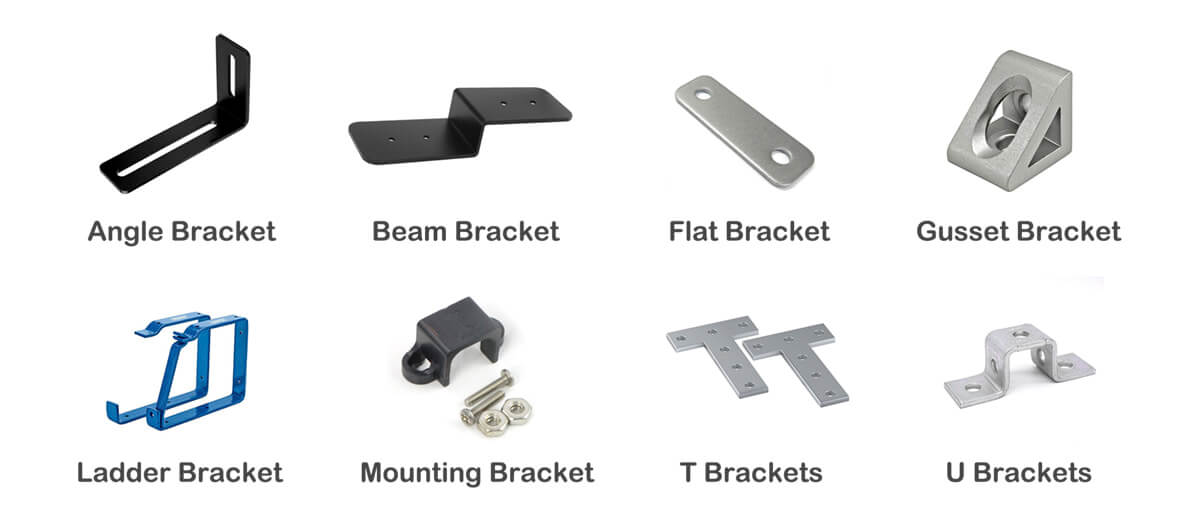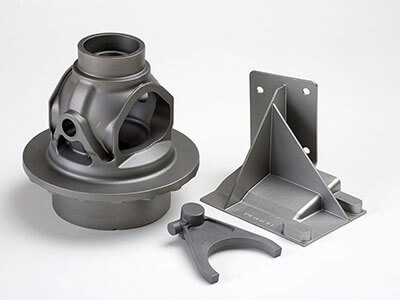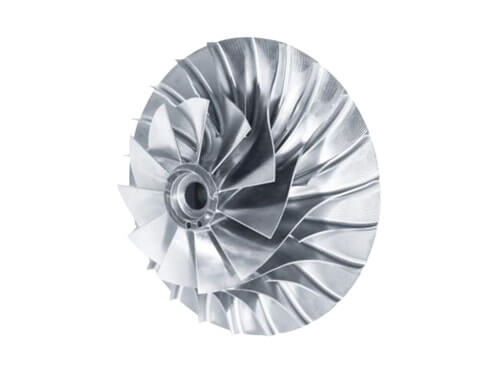Cast Iron brackets are manufactured through a casting process in which molten metal is poured into a mold and allowed to cool and solidify. Cast iron brackets, specifically, are made from cast iron and are known for their high strength and durability, making them a popular choice for heavy-duty applications.
Choosing the right bracket for heavy-duty applications is crucial for ensuring the safety and reliability of the equipment or structure being supported. The wrong choice of bracket can lead to equipment failure, structural damage, or even injury or loss of life. Cast iron brackets are an ideal choice for heavy-duty applications due to their high strength, durability, and ability to withstand large loads and forces. By selecting the appropriate bracket for the application, the safety and longevity of the equipment or structure can be ensured.
Benefits of Cast Iron Brackets in Heavy-Duty Applications
Cast iron brackets offer several benefits in heavy-duty applications. Some of these benefits include:
Load capacity: Cast iron is a material that can handle heavy loads and withstand large forces, making it ideal for applications that require high load capacity. Cast iron brackets can support heavy equipment or structures and provide stability and durability in extreme conditions.
Stability and reliability: Cast iron brackets are known for their stability and reliability. They are resistant to wear and tear and can withstand harsh environmental conditions such as extreme temperatures and corrosive substances. Cast iron brackets can also provide a secure and stable foundation for equipment or structures, ensuring their safety and longevity.
Safety: Cast iron brackets are often used in safety-critical applications where failure could result in injury or loss of life. The high strength and durability of cast iron brackets make them a safe choice for such applications. Cast iron brackets can withstand extreme conditions and provide a secure foundation for equipment or structures, reducing the risk of failure and ensuring safety.
Cost-effectiveness: While cast iron brackets may be more expensive than other types of brackets, they can be more cost-effective in the long run. Their high load capacity, stability, and durability can reduce the need for maintenance or replacement, saving costs over time. Additionally, cast iron brackets can provide a secure foundation for equipment or structures, reducing the risk of damage or failure and further cost.
Other Manufacturing Methods of Brackets
In addition to casting brackets, there are many other ways to manufacture brackets for various applications. Some common methods include stamping, forging, and welding.
Stamping Brackets
Stamping brackets are produced by forming sheet metal into a specific shape using a stamping press. The main advantages of stamping brackets are their efficiency and cost-effectiveness in producing high volumes of brackets with consistent shapes and sizes. They are often used in applications where lighter loads are involved and where cost-effectiveness is a priority. However, stamping brackets are not as strong or durable as other types of brackets, and they are less suitable for producing complex shapes.
Forging Brackets
Forging brackets are produced by shaping metal using force applied through a die. The main advantages of forging brackets are their high strength, durability, and complex shapes. They are often used in applications where high strength and reliability are critical, and where complex shapes are required. However, forging brackets can be more expensive than stamping brackets and are less suitable for producing large volumes of brackets.
Welding Brackets
Welding brackets are produced by joining metal components together using heat or pressure. The main advantages of welding brackets are their versatility and cost-effectiveness for small-scale projects or repairs. They are often used in applications where moderate strength and durability are required. However, welding brackets may not be as strong or durable as other types of brackets, and they may require additional finishing or polishing to ensure smooth surfaces.
Comparison table of the different manufacturing methods for bracket
| Feature | Casting Bracket | Stamping Bracket | Forging Bracket | Welding Bracket |
| Manufacturing Process | Molten metal poured into a mold and allowed to cool and solidify | Sheet metal formed into a specific shape using a stamping press | Metal shaped by applying force through a die | Metal components joined together using heat or pressure |
| Strength and Durability | High | Medium | High | Medium to High |
| Complexity of Shape | High | Low to Medium | Medium to High | Low to High |
| Production Volume | Low to Medium | High | Medium to High | Low to Medium |
| Material | Iron, steel, aluminum | Steel, aluminum, brass | Steel, aluminum | Steel, aluminum, copper |
| Cost | High | Low to Medium | Medium to High | Low to Medium |
Different Types of Brackets
There are many types of brackets, each designed for a specific application. Here are some of the most common types of brackets:

- Angle Brackets: Angle brackets are L-shaped brackets used for supporting and fastening two components together at a right angle.
- Corner Brackets: Corner brackets are used for reinforcing corners in structures and providing additional support against lateral forces.
- T Brackets: T brackets are used for attaching two components at a 90-degree angle to each other.
- U Brackets: U brackets are used for holding and securing components, such as pipes or cables, in place.
- Flat Brackets: Flat brackets are used for mounting components to flat surfaces, such as walls or ceilings.
- Gusset Brackets: Gusset brackets are triangular-shaped brackets used for strengthening joints in structures and distributing forces evenly.
- Beam Brackets: Beam brackets are used for attaching beams to other structural components, such as posts or columns.
- Mounting Brackets: Mounting brackets are used for mounting equipment, such as cameras, speakers, or lights, to walls or ceilings.
- Ladder Brackets: Ladder brackets are used for securing ladders to walls or other surfaces.
The type of bracket needed will depend on the specific application and the load capacity required. It is important to choose the right bracket for the application to ensure safety and reliability.
Materials of Bracket
The material used to manufacture a bracket is an important consideration that can affect the strength, durability, and cost of the bracket. Different materials offer different properties that make them suitable for specific applications.
Cast iron is a popular material for manufacturing heavy-duty brackets due to its high strength, durability, and ability to withstand large loads and forces. It is often used in applications where high load capacity and stability are required, such as in heavy machinery or construction.
Steel is another common material for manufacturing brackets due to its high strength and durability. It is often used in applications that require a high load capacity, such as in the automotive or aerospace industries.
Aluminum is a lightweight and corrosion-resistant material that is often used in brackets for applications that require a combination of strength and weight reduction, such as in the aerospace or marine industries.
Brass is a durable and corrosion-resistant material that is often used in brackets for decorative or aesthetic applications, such as in furniture or architecture.
In addition to these materials, there are also a variety of other materials that can be used to manufacture brackets, including copper, bronze, and plastics. The choice of material will depend on the specific requirements of the application, including load capacity, environmental factors, and cost-effectiveness.
Applications of Cast Iron Brackets in Heavy-Duty Industries
Cast iron brackets are widely used in heavy-duty industries due to their high strength and durability. Some of the industries that commonly use cast iron brackets include construction, automotive, machinery, and marine.
- In the construction industry, cast iron brackets are used for supporting structures such as bridges, buildings, and retaining walls. Cast iron brackets are ideal for these applications due to their ability to withstand heavy loads and harsh environmental conditions.
- In the automotive industry, cast iron brackets are used for supporting various components such as engines, transmissions, and suspension systems. Cast iron brackets can withstand the vibrations and stresses that are inherent in automotive applications, making them a reliable choice.
- In the machinery industry, cast iron brackets are used for supporting heavy equipment and machinery, such as manufacturing machines and industrial robots. Cast iron brackets can provide a secure and stable foundation for these applications, ensuring their safety and longevity.
- In the marine industry, cast iron brackets are used for supporting various components of ships and boats, such as engines, anchors, and steering systems. Cast iron brackets are suitable for these applications due to their resistance to corrosion and their ability to withstand the harsh marine environment.
By selecting the appropriate bracket for the specific application, the safety and reliability of the equipment or structure being supported can be ensured.
Conclusion
To summarize, brackets are an essential component in various industries, and choosing the right bracket is crucial for ensuring the safety and reliability of equipment or structures being supported. Cast iron brackets are widely used in heavy-duty applications due to their high strength, durability, stability, and safety. However, there are also other methods of manufacturing brackets, such as stamping, forging, and welding, each with its own advantages and disadvantages.
SIPX foundry offers a wide range of cast iron brackets that are suitable for various industries and applications. Our experienced team can work with customers to understand their specific needs and recommend the appropriate cast iron bracket for their application. With high-quality cast iron brackets from SIPX foundry, you can have peace of mind that their equipment or structure is supported by a reliable and durable component.

